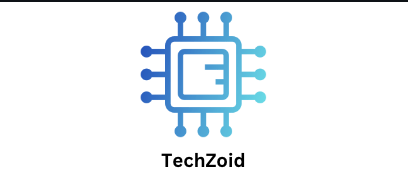CPA (Cost Per Action): What Is It?
CPA is an internet advertising pricing strategy that is based on performance. In this case, advertisers only have to pay when a user performs a certain action. Depending on the objectives of the campaign, these activities may include buying something, signing up for a newsletter, completing a form, downloading an app, or asking for a quote.
For instance, an e-commerce company will only be billed when a customer successfully completes a transaction after running a CPA campaign that targets purchases. Compared to CPM (Cost Per Thousand Impressions) or CPC (Cost Per Click), where advertisers pay regardless of the results, CPA is therefore more result-oriented.
How Do CPAs Operate?
The three main participants in CPA marketing are customers, publishers (or affiliates), and advertisers. Advertisers create campaigns with clear objectives and indicate the price they are prepared to pay for each action. Publishers use special tracking links to advertising goods and services on their platforms, such as websites, blogs, social media, or email lists.
The advertiser only pays for the action that is completed when a customer clicks on a publisher’s link and completes the required activity; the publisher receives a commission. Cookies, affiliate networks, or sophisticated tracking software are typically used for tracking in order to guarantee accuracy and stop fraud.
CPA Campaign Types
Advertisers pay when a sale is made under the Pay Per Sale (PPS) model. This is typical in affiliate marketing and e-commerce.
Pay Per Lead (PPL): When a user submits contact details, completes a form, or enrolls in a trial, money is paid. SaaS, real estate, and insurance firms all like this.
Advertisers pay when a customer installs an application using Pay Per Install (PPI), which is mostly utilized in app marketing.
Because each kind serves distinct corporate goals, CPAs are adaptable across a range of sectors.
One benefit of CPA marketing
1. Risk-Free for Advertisers
Advertisers are less likely to waste money on impressions or clicks that don’t convert since payments are linked to real outcomes.
2. A high return on investment
Because they only spend for activities that advance their business, advertisers frequently receive higher returns on investment.
3. Model Scalability
Working with several publishers and affiliates makes it simple to build CPA campaigns, improving reach without raising risks.
4. Improved Interest Alignment
The goals of publishers and advertisers are aligned by CPA; publishers want to produce quality traffic in order to get commissions, while advertisers desire sales or leads.
CPA Marketing’s Difficulties
CPA has its share of difficulties, despite the obvious benefits it provides.
1. Vigorous Competition
Because CPA campaigns are so successful, publishers are highly competitive, which makes it more difficult for new affiliates to be successful.
2. Tight Procedures for Approval
Strict screening is frequently used by advertisers and affiliate networks to guarantee that publishers provide high-quality traffic. Obtaining approval might be challenging for novices.
3. The Possibility of Fraud
Advertisers may suffer from fraudulent activity such as bot traffic, phony leads, or incentivized acts. Tools for sophisticated tracking and fraud detection are essential.
4. Extended Conversion Duration
Compared to CPC or CPM advertisements, CPA marketing may take longer to generate results since they demand a completed action.
CPA vs. Other Models of Pricing
Cost Per Click (CPC): Regardless of whether consumers convert, advertisers pay for clicks.
CPM (Cost Per Mille): Instead of concentrating on conversions, advertisers pay for each 1,000 impressions.
Cost Per Lead, or CPL, is a subset of CPA in which the activity is focused on producing leads.
Because marketers only pay for conversions, CPA is the most performance-driven of them.
CPA Marketing’s Future
CPA is expected to climb even more as data-driven marketing becomes more and more significant. Reaching high-quality audiences that are likely to convert is becoming simpler thanks to machine learning, AI-driven targeting, and sophisticated analytics. Furthermore, CPA continues to be a preferred strategy for long-term growth as companies look for higher returns on investment in a cutthroat digital landscape.
Additionally, affiliate networks and platforms are improving transparency and fraud detection, which will further increase the dependability of CPA marketing. Furthermore, the growth of social commerce, influencer marketing, and mobile applications is opening up new avenues for CPA campaigns.
Conclusion
Cost Per Action, or CPA, is a performance-driven strategy that guarantees marketers only pay for quantifiable outcomes rather than merely a price mechanism. Businesses in a variety of sectors may benefit from CPA’s cost-effective, ROI-friendly approach by concentrating on conversions rather than clicks or impressions. Even if there are obstacles like competitiveness and fraud, when campaigns are handled well, the advantages greatly exceed the hazards.
CPA stands out as a strategy that connects marketers’ investment and real business growth as digital marketing develops further. In the world of digital advertising, CPA is still one of the most effective methods for companies trying to maximize returns on their marketing investment.
